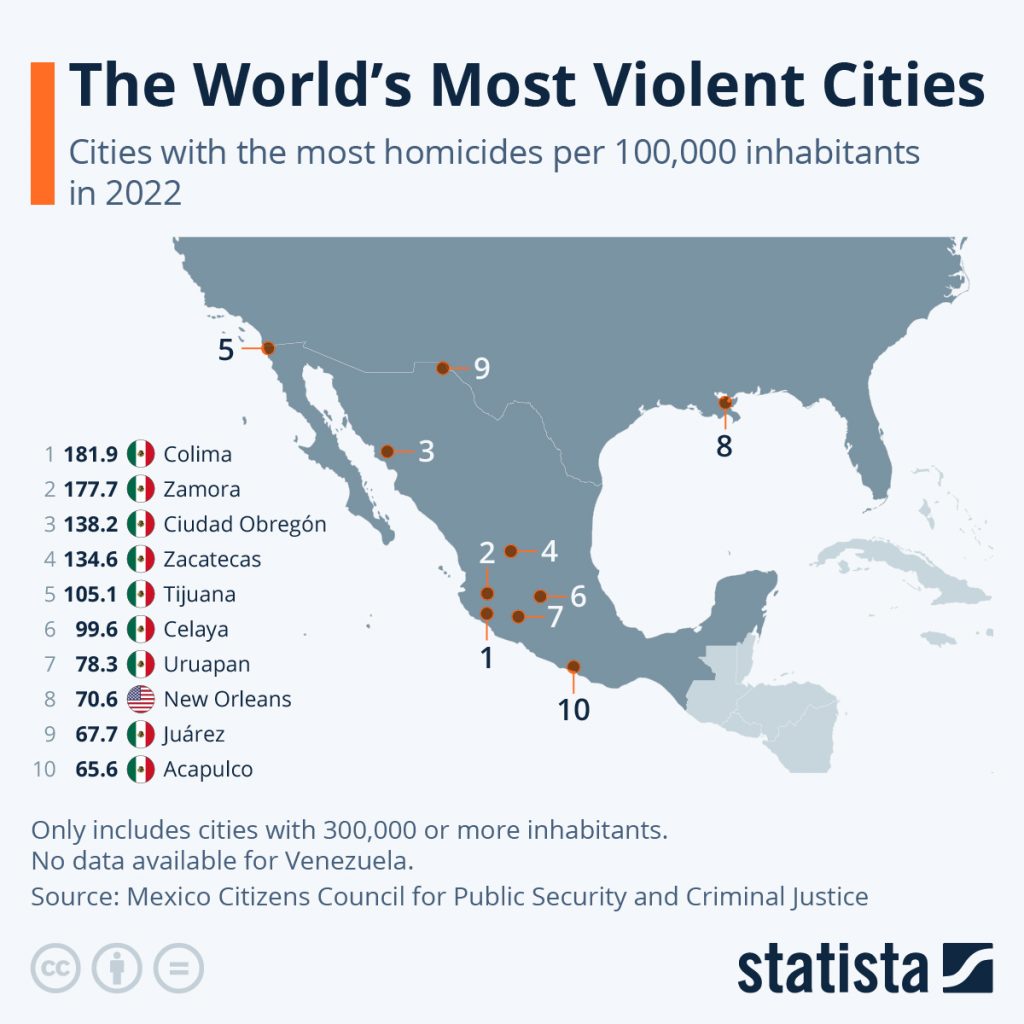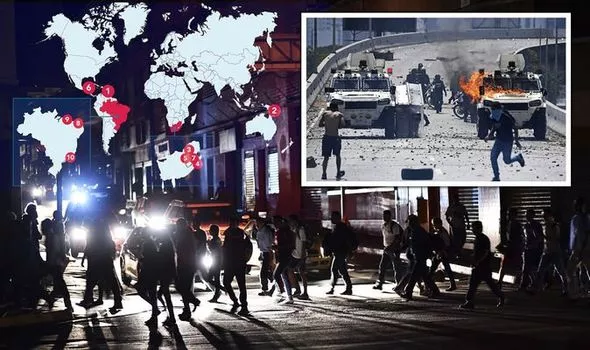The world’s most violent cities, a disturbing reality that haunts the streets with terror and bloodshed. In these urban jungles, danger lurks around every corner, and the sound of gunshots echoes through the night. From the bustling metropolises of Latin America to the gritty streets of the United States, violence has become an ever-present reality for millions of people. Would you ever consider traveling these the Most Violent Cities in the World?
Yes, it is unfortunate that violent crimes happen every day all over the world, and it is important to work towards reducing the prevalence of such crimes. The Citizen Council for Public Security and Criminal Justice’s report on the cities with the highest murder rates in the world highlights the seriousness of this issue.
At the top of the list is Colima, Mexico, a city plagued by drug cartels and gang warfare. Here, the streets are ruled by violence, and the sound of gunfire is a common occurrence. The city is a battleground, with rival gangs fighting for control over the drug trade. The innocent are caught in the crossfire, and death is an ever-present threat.
In Brazil, the city of Mossoró has become a hotbed of violence. Here, drug trafficking and organized crime have taken hold, and the streets are no longer safe. Residents live in fear of the gangs that roam the streets, and the police seem powerless to stop them.
In Colombia, the city of Cali is a hub of drug trafficking and organized crime. Here, the cartels rule the streets, and violence is a way of life. Innocent people are caught in the crossfire, and the police are often powerless to stop the bloodshed.
In South Africa, Cape Town is a city on the brink of chaos. Here, gang warfare and political instability have created a climate of fear and violence. Innocent people are caught in the crossfire, and the streets are a battleground.
In the United States, New Orleans has become a city of violence. Here, gun violence and gang warfare have taken hold, and the streets are no longer safe. The sound of gunshots echoes through the night, and residents live in fear of the next attack.
From Mexico to Brazil, Colombia to South Africa, and the United States, violence has become an ever-present reality. Innocent people are caught in the crossfire, and the streets have become battlegrounds. The world’s most violent cities are a testament to the human cost of drugs, gang warfare, and political instability.
The world’s most violent cities

Brazil, which has ten cities, is another nation that makes the top 50, with Mossoró in the North of the country coming in at number 11. South Africa and Colombia (six cities beginning with Cali in position 32) are other countries that commonly appear on the list (four cities, including Cape Town and two more ranked in the top 20). There are a total of seven mentions of the continental United States. Baltimore (rank 17), Detroit (rank 23), Memphis (rank 25), Cleveland (rank 27), Milwaukee (rank 39), and Philadelphia (rank 46) are the other cities that make the list in addition to New Orleans. Puerto Rico’s San Juan appears in position 41.
It is true that violent crime rates can vary greatly between countries and regions of the world based on a number of factors. These factors may include social and economic inequality, political instability, organized crime, drug trafficking, and access to firearms, among others.
It is important to recognize that reducing violent crime rates is a complex issue that requires a multifaceted approach. This may involve addressing the underlying social and economic factors that contribute to violence, improving law enforcement and judicial systems, providing access to mental health and other support services, and implementing effective gun control policies.
Efforts to reduce violent crime must also be tailored to the specific context and needs of each community. This may involve working with community leaders, law enforcement officials, and other stakeholders to develop targeted strategies and programs that address the unique challenges and risks faced by different populations.
It was a bleak picture, but one that needed to be seen. The people who lived in these cities deserved better, and it was up to all of us to find a way to end the violence and bring hope to those who had none.
